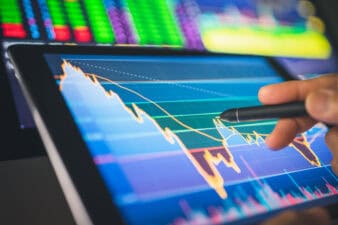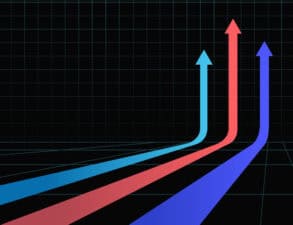In general, the higher the dividend yield, the greater the risk. Of course, there are always exceptions, but this is the general rule of thumb. Let’s look at BCE (TSX:BCE) stock to try to determine the risk/reward level of the stock and the dividend.
Dividend growth at BCE continues
In BCE’s latest result (Q1/24), revenue increased marginally to $6 billion, adjusted net earnings fell 15% to $654 million, and free cash flow remained stable at $65 million. With this, BCE increased its dividend by 3.1% to $3.99.
BCE has 40 years of dividend payments under its belt. In each of the last 15 years, the company has grown this dividend by 5% or higher. It’s a pretty strong dividend history, which makes BCE a pretty strong dividend stock. But recently, things have deteriorated from these levels. In fact, the most recent 3.1% dividend increase is noticeably lower than the yearly increases in the last 15 years.
Yet, the dividend increase is still encouraging, as it signals BCE management’s dedication to its dividend. Still, the questions as to its sustainability remain.
Dividend coverage leaves something to be desired
BCE’s dividend coverage does not look good. Basically, the company is paying out more in dividends than it has. For example, its payout ratio, which is calculated as dividends divided by net income, is well over 100%. Also, BCE’s dividend payments are greater than its free cash flow generated. As a result, debt continues to grow and now stands at over $31 billion.
We cannot underestimate the toll that these high levels of debt have taken on the stock. BCE’s stock price graph below reflects this quite well — the stock has declined 22% in the last year.
The future remains uncertain for BCE but…
BCE’s guidance for next year reflects the expectation for continued struggles. For example, adjusted earnings per share (EPS) growth is expected to come in between -7% and -2% and free cash flow is expected to decline between 11% and 3%, This lacklustre expectation is driven by a few factors that are negatively affecting BCE’s business.
For example, an increased interest expense, a higher depreciation and amortization expense, and lower gains on the sale of real estate are negatively affecting net income and cash flows. Also, higher severance expense as a result of the recent layoffs will negatively affect BCE’s results. But, going forward, the layoffs should improve BCE’s bottom line, and potentially lower interest rates will provide relief from higher interest costs.
Finally, the CRTC’s decision to stimulate competition for internet services by requiring providers like BCE to provide competitors with access to their fibre-to-the-home networks has put a wrench in BCE’s plans. As a result, the company has significantly reduced its capital spending on its fibre optic network expansion plans and has made a decision to shift focus away from its regulated business.
The bottom line
While BCE is a top-quality dividend stock, it has had to deal with many headwinds, and the stock price currently sits at 10-year lows. This appears to be overdone, as BCE continues to have a solid longer-term outlook, driven by its unmatched position in the telecom industry, its fastest and farthest-reaching broadband internet connection, and its leading position in fibre optics.
The company remains committed to its dividend, and we can expect things to begin to get better as its rightsizing actions begin to show efficiency improvements.








